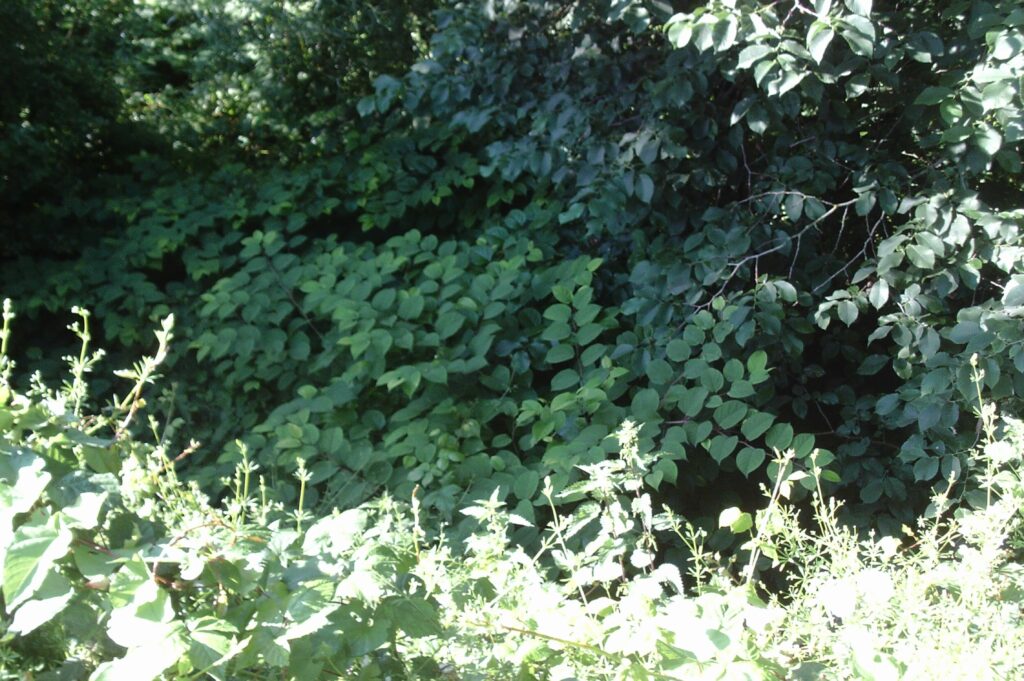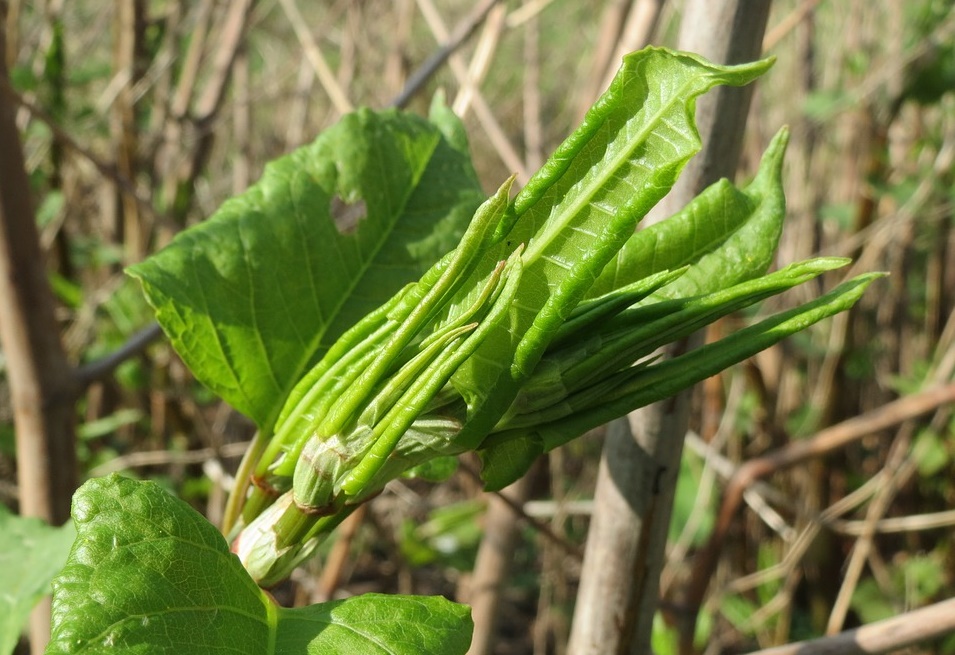
Japanese Knotweed Survey
Enquire Today For Professional Advice
At Japanese Knotweed Survey, we offer professional services to manage Japanese knotweed infestations in.
Japanese Knotweed Survey conducts accurate surveys to identify knotweed on your property.
Japanese Knotweed Survey assesses the impact and provides effective treatments to control and manage the infestation.
Our expert team at japanese-knotweed-survey.co.uk delivers site-specific solutions to address knotweed’s invasive nature and mitigate its effects on your property.
Japanese Knotweed Removal Survey is committed to adhering to all legal regulations and environmental guidelines to ensure your property is protected and compliant.
Contact us today to schedule a survey and ensure your property is safeguarded against Japanese knotweed.
Home Survey
Japanese Knotweed Survey recommends obtaining a pre-purchase or pre-sale survey if you suspect your home is affected by knotweed.
A pre-sale survey will allow homeowners to fully understand the extent of the infestation, enabling buyers to make informed decisions and providing sellers with a crucial Knotweed Management Plan (KMP) to facilitate the sale.

The Japanese Knotweed Survey underscores the importance of this plan, as a KMP is often a prerequisite for mortgage approval, as most lenders require.
According to the Environment Agency, a KMP is essential once Japanese knotweed is identified.
Japanese Knotweed Survey has successfully assisted hundreds of homeowners in removing knotweed from their property, ensuring a smooth sale process.
Commercial Survey
Japanese Knotweed Survey understands that Japanese knotweed can slow construction projects and create significant challenges for developers and landowners.
Japanese Knotweed Survey partners with construction firms, commercial companies, and private developers to swiftly and efficiently address infestations and ensure that all practices are fully compliant.

Our fully accredited team at Japanese Knotweed Survey conducts comprehensive site surveys to identify problems and assess risks related to proposed development plans.
The team at japanese-knotweed-survey.co.uk provides a detailed remediation proposal, along with thorough excavation or treatment strategies as outlined in our Knotweed Management Plan (KMP).
Specialist Survey
Japanese Knotweed Survey offers specialised surveys for solicitors, estate agents, and property management companies.
Our team of Knotweed experts provides services that complement the business offerings of these firms by conducting surveys on their behalf.

Japanese Knotweed Survey creates valuable partnerships that enhance business capabilities and ensure clients receive comprehensive solutions.
We provide a complete and well-rounded service experience, improving business and client outcomes.
Japanese-knotweed-survey.co.uk offers training that helps firms identify invasive species and ensures surveyors stay updated with vital information.
How Much Does A Japanese Knotweed Survey Cost?
Japanese Knotweed Survey charges £250 + VAT for knotweed surveys.
Our experts at the Japanese Knotweed Survey assess property size and infestation severity to determine the cost.
Japanese Knotweed Survey provides detailed quotes based on-site evaluation.
Why You Need a Japanese Knotweed Survey
A Japanese knotweed survey identifies the presence and extent of this invasive plant on your property.
A knotweed survey survey determines the infestation level and assesses its associated risks.
Japanese Knotweed Survey provides a thorough evaluation, enabling you to make informed decisions about buying, selling, or developing property.
A survey ensures compliance with legal obligations, as many mortgage lenders require it, along with a Knotweed Management Plan (KMP), before approving financing.
Japanese Knotweed Survey categorises the level of risk using the Royal Institution of Chartered Surveyors (RICS) “risk” table, which considers the knotweed’s proximity to the habitable area and any structural damage caused.
In cases of legal disputes such as encroachment, misrepresentation, or professional negligence, our team at Japanese Knotweed Survey assesses the situation and provides expert evidence to support such claims.
Japanese-knotweed-survey.co.uk also conducts post-completion surveys to document the final condition and the position of any buried or relocated knotweed waste, particularly on construction sites.
Knotweed records are crucial for future property management and are included in the Operational and Maintenance Manuals on development sites, ensuring long-term compliance and safety.
What is Involved In a Japanese Knotweed Survey?
Japanese Knotweed Survey’s process ensures a thorough and accurate assessment, which includes the following steps:
- A comprehensive visual inspection of the garden and grounds.
- Examination of the surrounding areas and neighbouring properties for any signs of Japanese knotweed.
- Recording the size, location, and distances of the identified knotweed from the property and boundaries, including the size of the plants.
- Documents the plant’s characteristics, potential encroachment, and relevant legal considerations to provide you with a complete understanding of the situation.
- Detailed photographs of the property, garden, and grounds for your records, especially if you opt for the JKMP.
- In-depth site map, highlighting the contaminated areas, the extent of the knotweed, and its proximity to water sources or the property.
- RICS risk assessment and provides comprehensive health and safety guidelines for all proposed treatment programs.
- Delivers the survey results to you within 24-72 hours, ensuring timely and informed decision-making.
Why Choose Japanese Knotweed Survey
Fast Response Time
Japanese Knotweed Survey prioritises fast response times. Our nationwide coverage allows us to offer quick turnaround times, often arranging a survey within days of your enquiry. We focus on your needs to help you take action swiftly.
Experienced Professionals
The Japanese Knotweed Survey employs highly qualified and experienced professionals. Our team specialises in identifying and assessing Japanese Knotweed, staying updated on the latest regulations and best practices. We ensure that our surveys meet all legal requirements and industry standards.
Detailed, Clear Reports
Japanese Knotweed Survey delivers detailed, clear reports. We ensure our reports are easy to understand, outlining the presence, risk, and recommended actions. Our company empowers you to make informed decisions about managing and treating the infestation.
Tailored Solutions
Japanese Knotweed Survey offers tailored solutions. We recognise that every property is unique, and so is every knotweed infestation. Our company provides personalised advice and solutions based on the specific conditions of your property, ensuring the most effective management plan.
Trusted by Homeowners and Businesses
Japanese Knotweed Survey has a proven track record of trust and reliability. We help both homeowners and businesses protect their investments from the damaging effects of Japanese Knotweed. Our reputation is built on successful outcomes and satisfied clients.
Nationwide Expertise
Japanese Knotweed Survey provides comprehensive Japanese Knotweed surveys across the entire country. Our company offers expert assessments no matter where your property is located, ensuring you get accurate and thorough information quickly and efficiently.
Competitive Pricing
Japanese Knotweed Survey offers competitive pricing. We ensure high-quality surveys at a price that provides excellent value for your money. Our company believes that peace of mind should be accessible to everyone, so we offer transparent pricing with no hidden fees.
Ongoing Support
Japanese Knotweed Survey provides ongoing support. We guide you through the next steps, whether that’s treatment, monitoring, or working with legal or financial professionals. Our service extends beyond the survey to ensure you have the support you need.
Is the Japanese Knotweed Survey Legally Compliant?
Japanese Knotweed Survey provides legally compliant services. Our surveyors adhere to regulations surrounding Japanese knotweed, and the team ensures that all legal requirements are met during the survey process.
The surveys can be used in legal disputes such as encroachment or misrepresentation.
Japanese Knotweed Survey ensures that all work is carried out to the highest standards, providing clients with reliable and legally sound assessments.
The Wildlife and Countryside Act 1981 makes it an offence to cause knotweed to grow in the wild, and it can be construed as an offence to allow it to spread from your property knowingly.
How Long Will The Japanese Knotweed Survey Take?
Our Japanese knotweed survey typically takes 30–60 minutes for a residential property, while larger sites may require more time.
Japanese Knotweed Survey completes the on-site assessment efficiently, and the team may provide same-day or next-day turnaround for survey documents, though results are usually delivered within 24–72 hours.
After completing the survey, Japanese Knotweed Survey sends a detailed report to the client.
The report includes the survey’s purpose and objectives, results and findings, recommendations for managing the knotweed, a map of the affected area, and a Knotweed Management Plan (KMP).
What Happens After The Knotweed Survey?
After the survey, Japanese Knotweed Survey provides a detailed report outlining the findings. The team recommends appropriate treatment options based on the level of infestation.
If required, Japanese Knotweed Survey creates a Knotweed Management Plan (KMP) tailored to the property’s needs. The report and KMP ensure compliance with legal requirements and facilitate mortgage applications or property transactions.
Japanese Knotweed Survey may also offer ongoing monitoring and maintenance services to ensure the knotweed is effectively managed and does not return. The survey results are typically delivered within 24-72 hours, allowing for timely decision-making.
Get in Touch
Contact our team of Japanese Knotweed specialists today for our full range of services.
